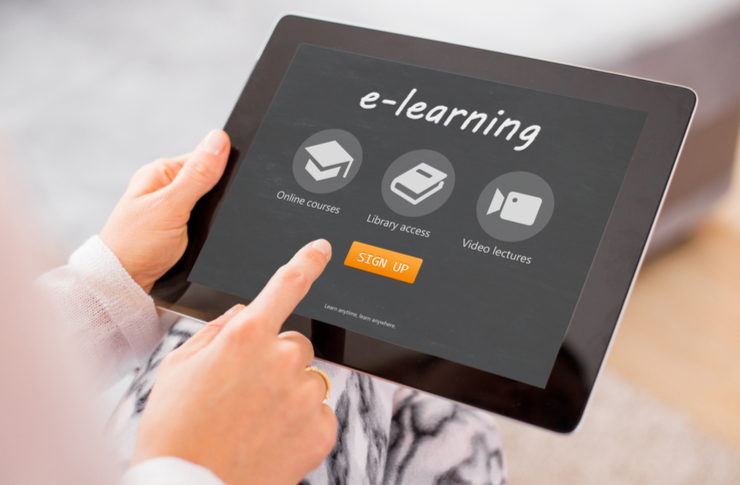How E-Learning has Been Enhanced in the Resent Years Due to Improved Digital Technology
The huge demand and need for e-learning across the globe due to the recent worldwide pandemic and several lockdowns, ensured the the tremendous growth in e-learning and technology begins in every household.

E-learning has been around for many years now, on a much smaller scale, however, with the pandemic and lockdowns, e-learning has literally accelerated the growth 100x in terms of use, technologies, and developments within the e-learning space. As with any huge increase in demand, technology has to have been rapidly adopted and developed at a tremendous rate.
Ultimately, digital technology is enabling the mobile learning journey to continue to grow.
Virtual Environments
Technology has enabled an almost ‘in person’ experience through the use of virtual environments and virtual and augmented reality. For For example, students are able to work within a ‘virtual classroom’ through both video and voice, engaging with tutors and other students in virtually the same way as traditional learning, just behind a screen in a suitable location.
Technology has further enabled classrooms and education providers to record training sessions which results in a good resource for students to return to if required to jog their memories and allow them to revisit areas they may have struggled to understand within the classroom environment. Without this, and in the traditional settings, students would need to be asking these questions or continually asking teachers things they can’t recall which can affect other students’ learnings.
Having the ability to record sessions and host them separately, does therefore mean technology has created a gap for online training platforms. With entire courses and materials hosted in one place for students to view and learn, wherever and whenever. From a teacher or education provider’s point of view, this then opens the learning modules and classroom to students worldwide, not limited to classroom numbers, but solely limited to the infinite ability to host. This from a commercial view would be extremely beneficial to providers as they don’t need to limit intakes.
Data
Digital technology is enhancing the mobile learning landscape constantly through the use and collection of data. The data collected or able to be collected is almost mind-blowing. It can identify areas to improve the course or learning experience, to specific personalization data for an individual and how they are learning throughout the process to the second.
From a commercial point of view, the option of collecting and reviewing big data will ultimately identify the regularity of students learning (how often and when they are learning) which could identify surges in demand whereby servers and technology may need to be upgraded. How do students interact with the materials and course experience, are there obvious areas which students struggle with, find hard to navigate, or generally have a much higher drop-off rate that can be improved from a user’s point of view?
The technology can be that advanced that it can monitor students’ work, and begin asking questions or prompts whereby the student may be struggling to answer questions or struggling to understand certain concepts. This will provide the provider with real-time feedback and the ability to implement real-time support and functionality that may be missing or required for future developments.
Personalization
Technology has created a huge amount of personalization ability from a student’s point of view and education providers. In theory with the technology available personalization is more a case of time rather than “what if”. From personalized questions, difficulty, and even support per student and their abilities.
Learners schedules
The option to have technologically advanced learning, allows students to learn and work within their own schedule. Whether that’s due to time zones (international students) or the need for part-time work or real-world experience. This can hugely benefit a learner’s ability to take on board the materials, improve their understanding but also improve their happiness in the whole experience. This will further improve the rate of dropouts and drop-offs throughout the learning experience.
Conclusion
As technology continues to make our everyday lives interesting and exciting. We have seen such tremendous growth in the technology and whole landscape of e-learning that the future holds so much potential, which we are extremely excited about. Technology if used correctly can dramatically improve the e-learning journey and therefore will be a huge part of future learning.
The use of technology from both a student’s point of view and education providers opens up a world of opportunity. Utilizing data to make informed business decisions from expanding learning materials, courses, and more. And creating a more personalized experience for students to learn at their own rate, in their own schedule, and enhanced by personalization to improve overall understanding and grades.




